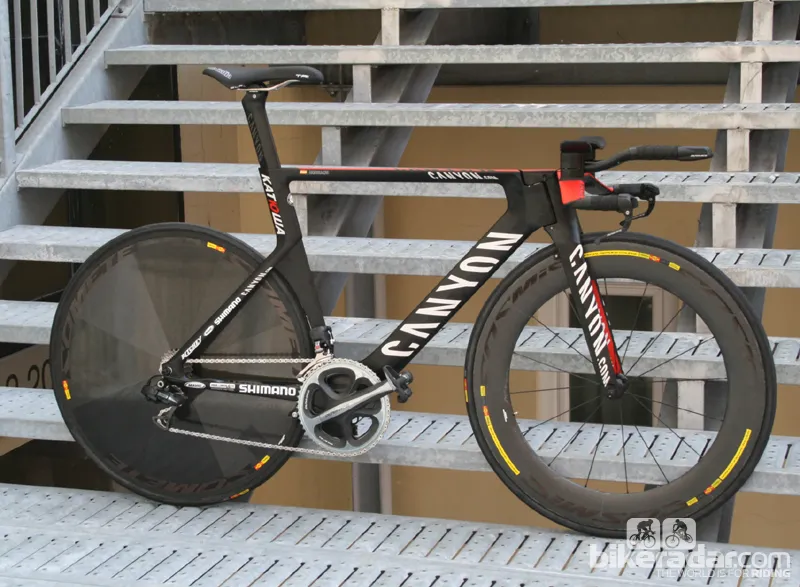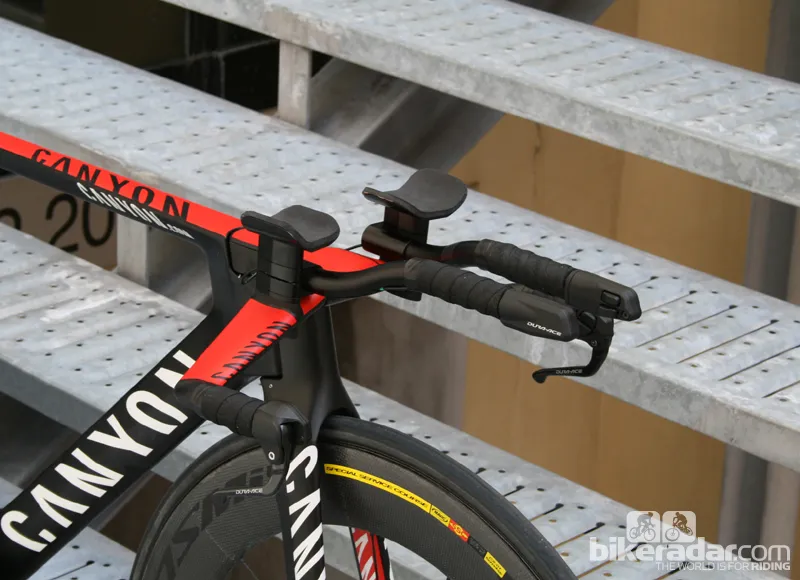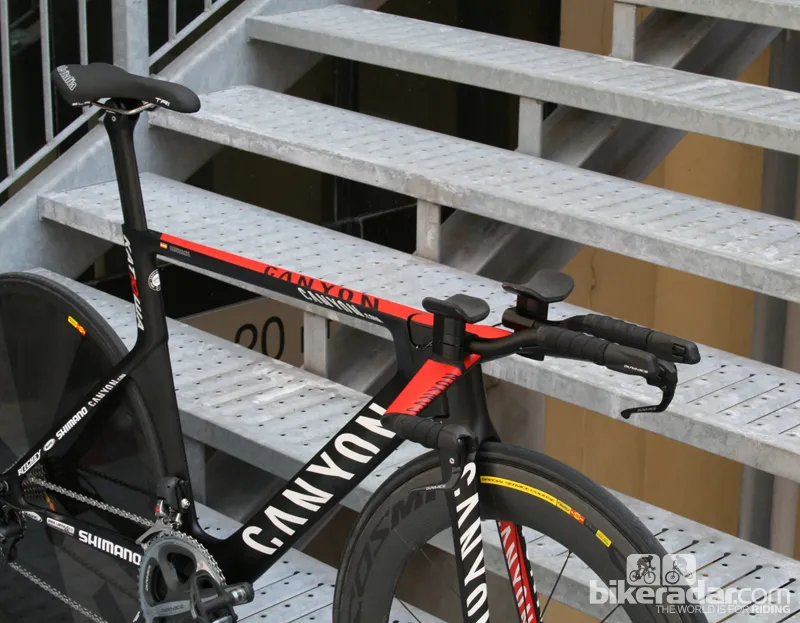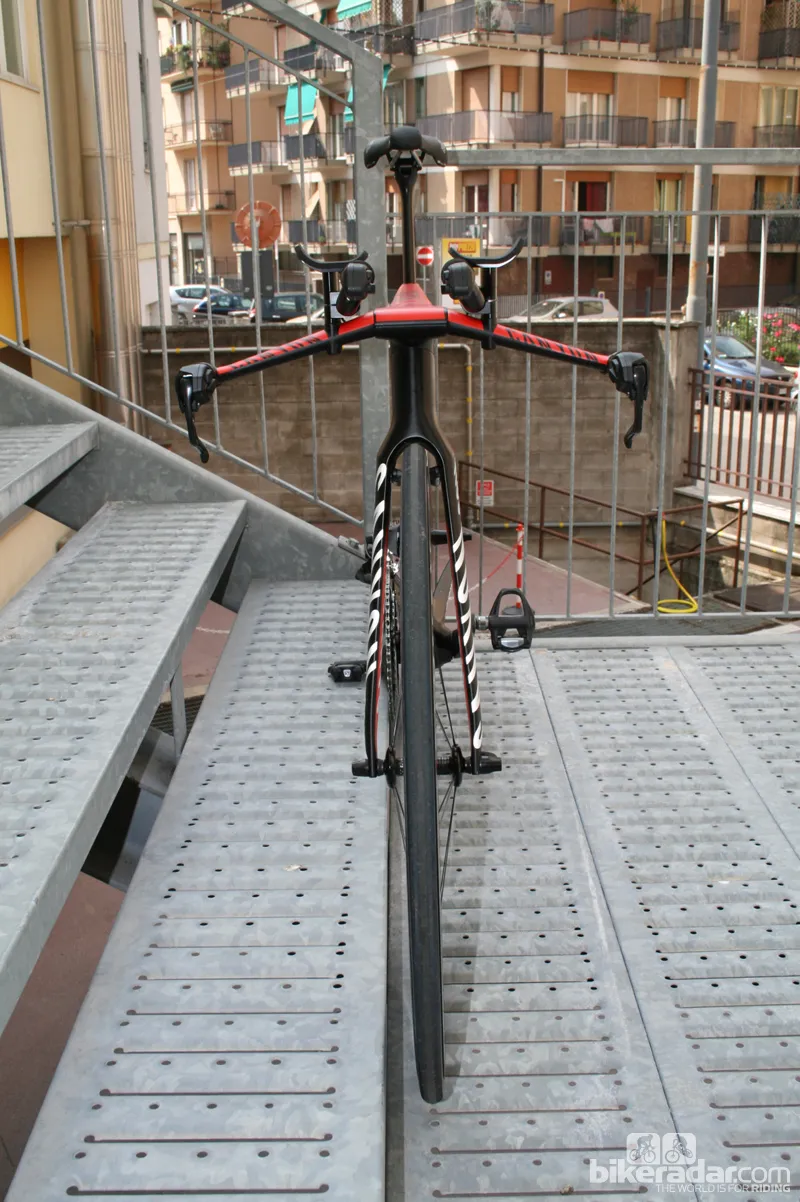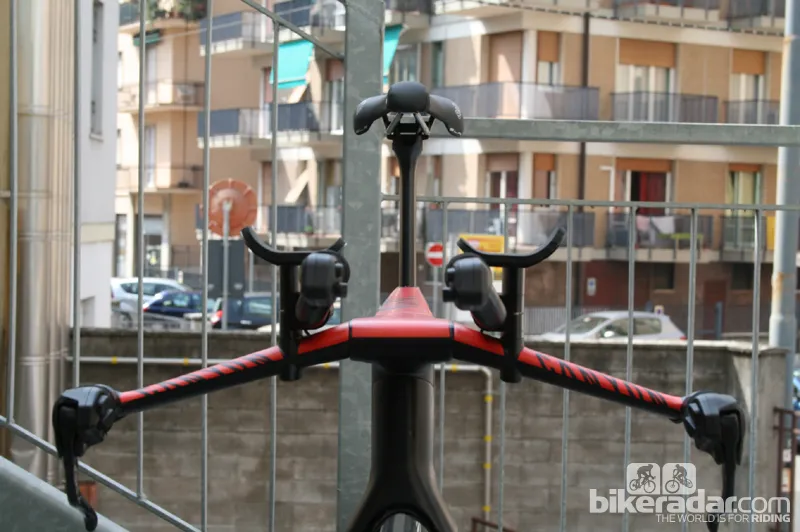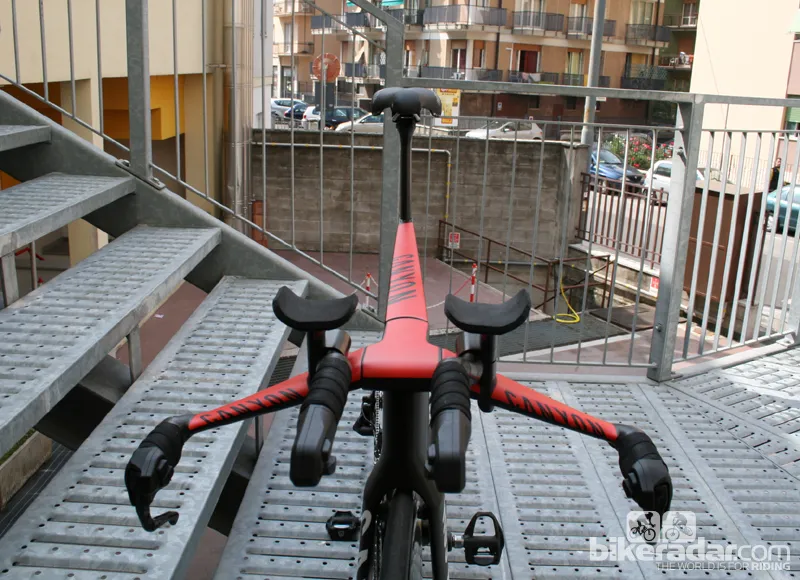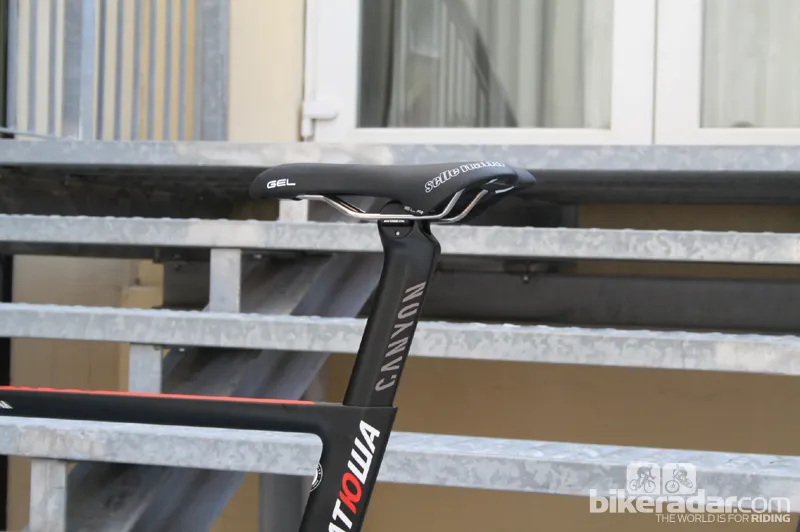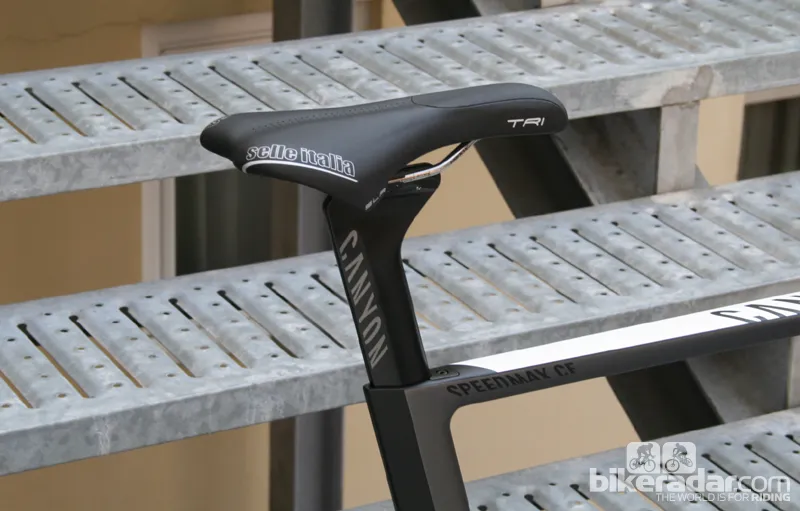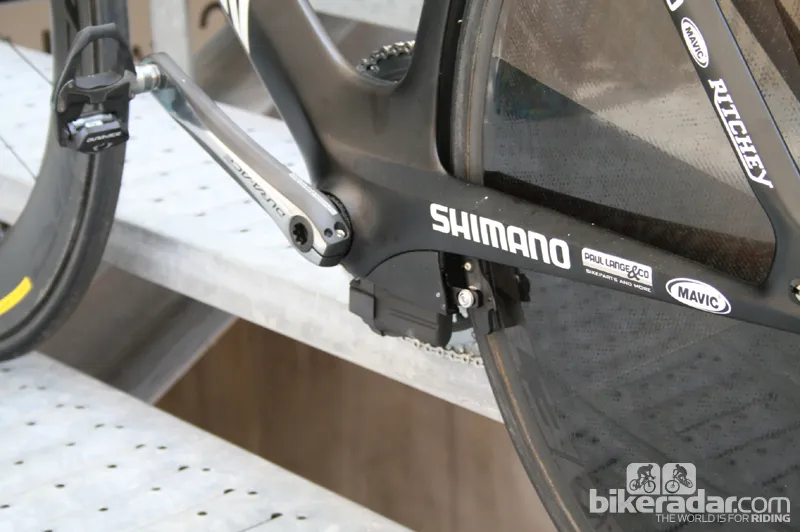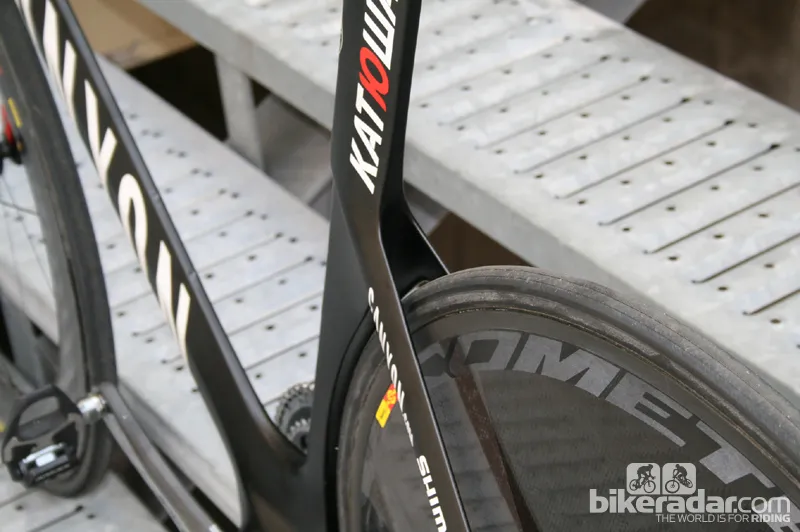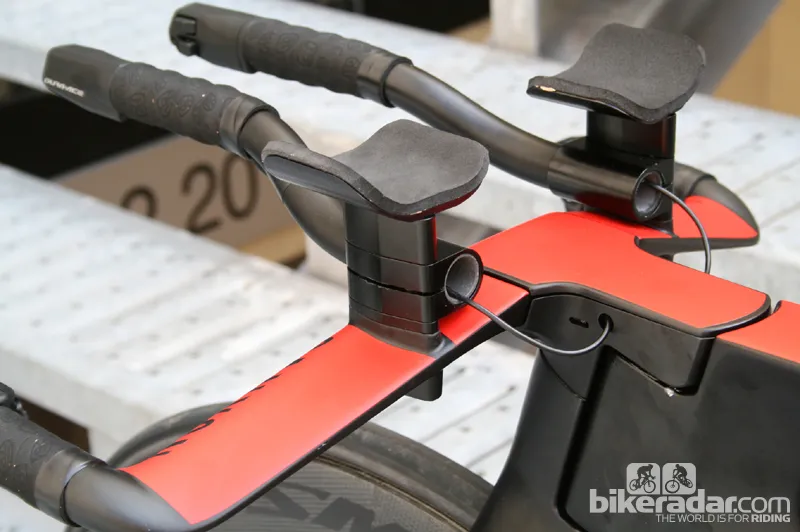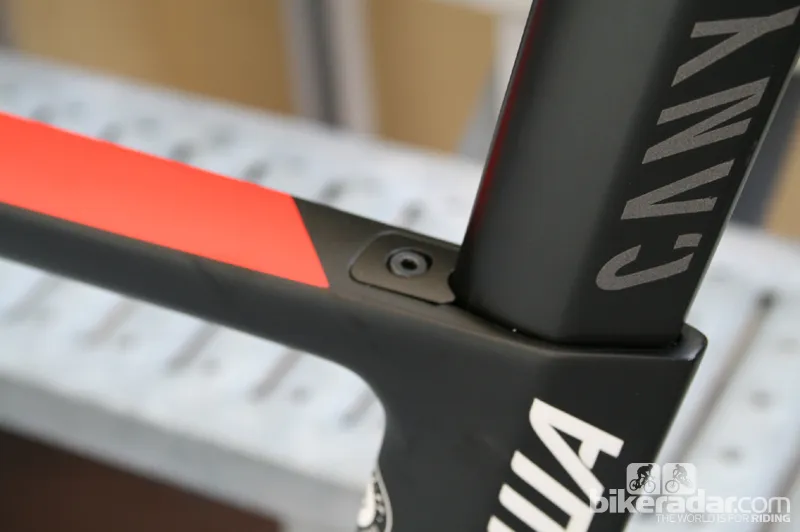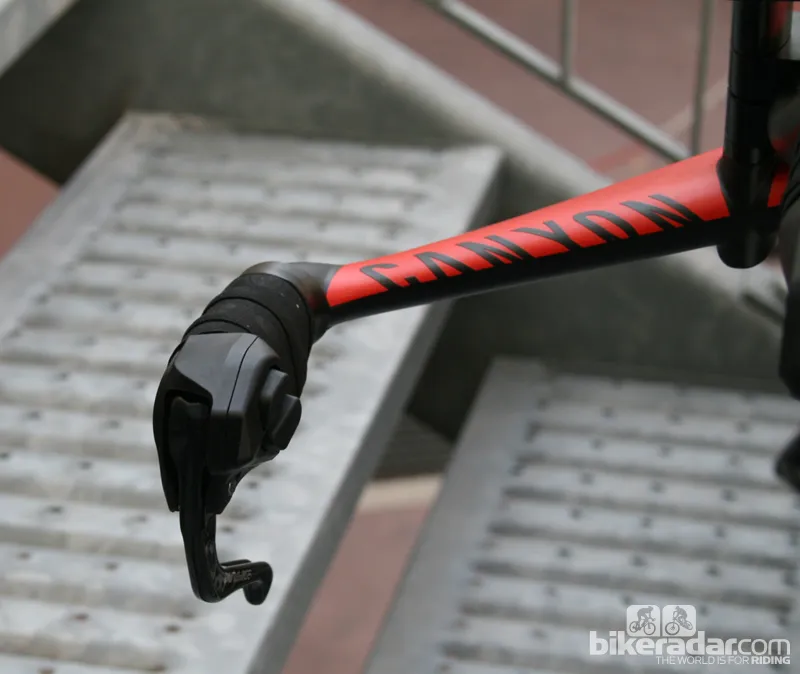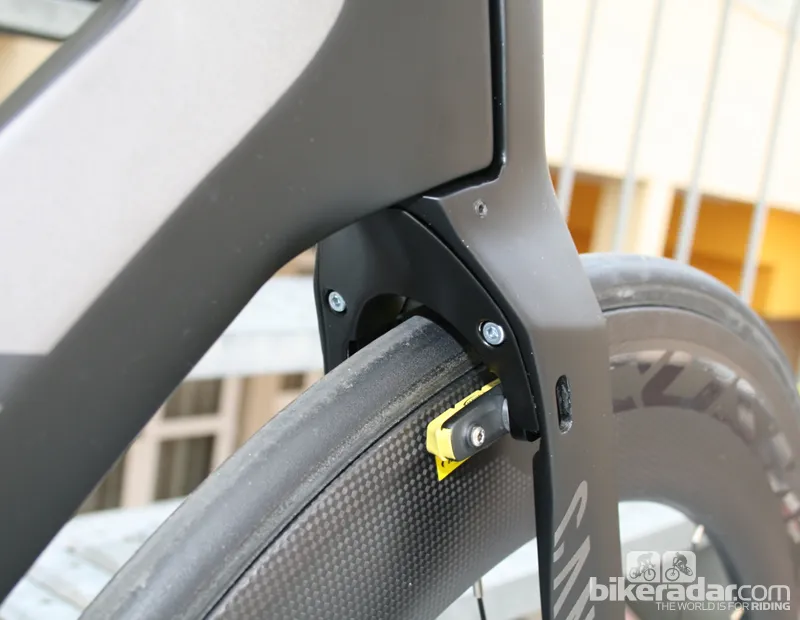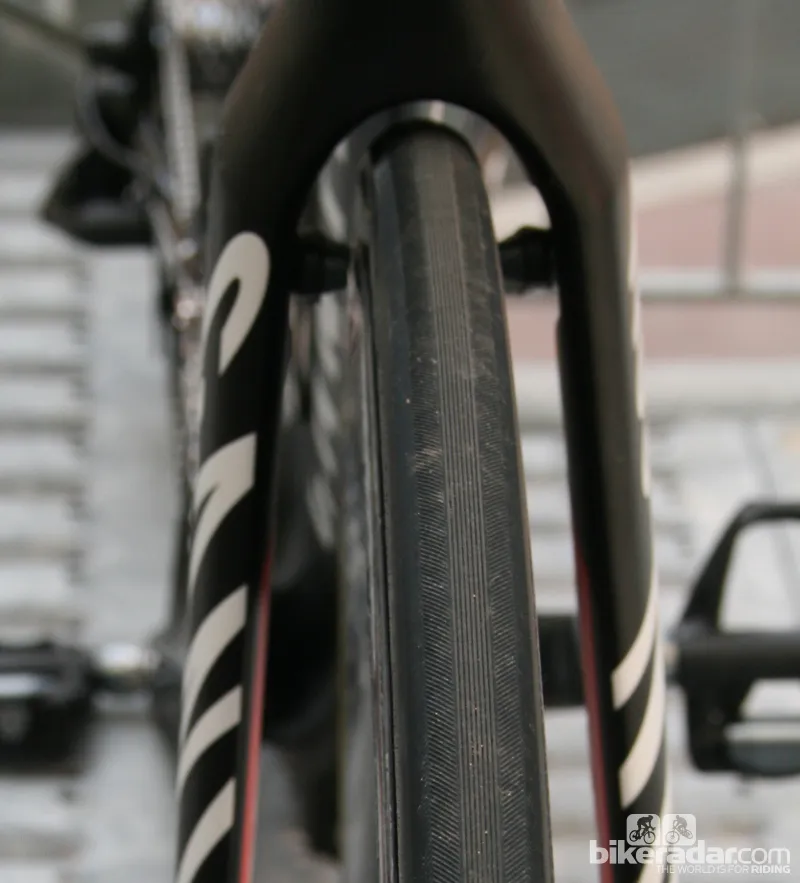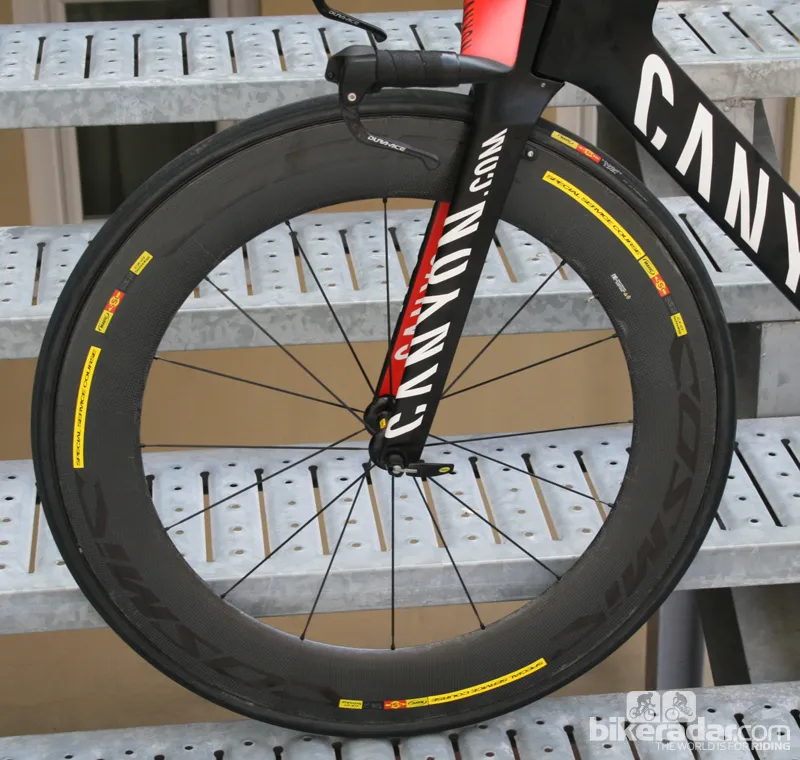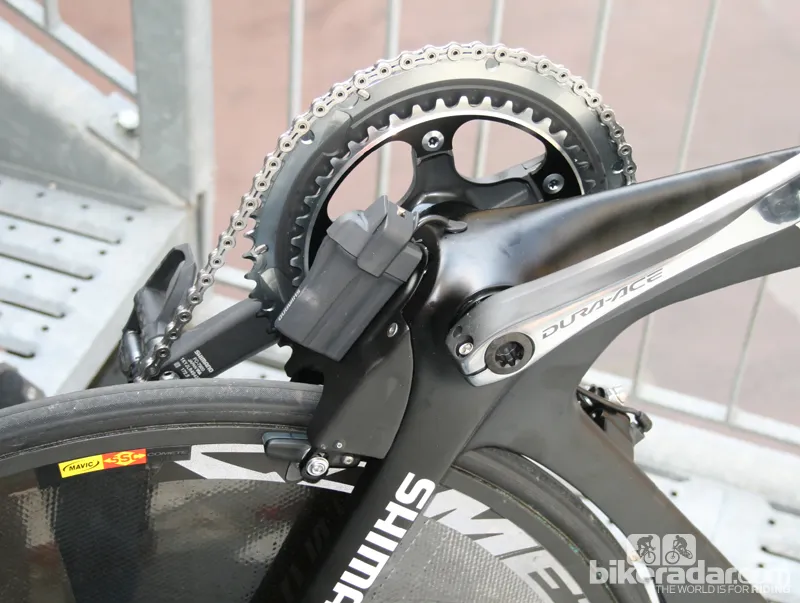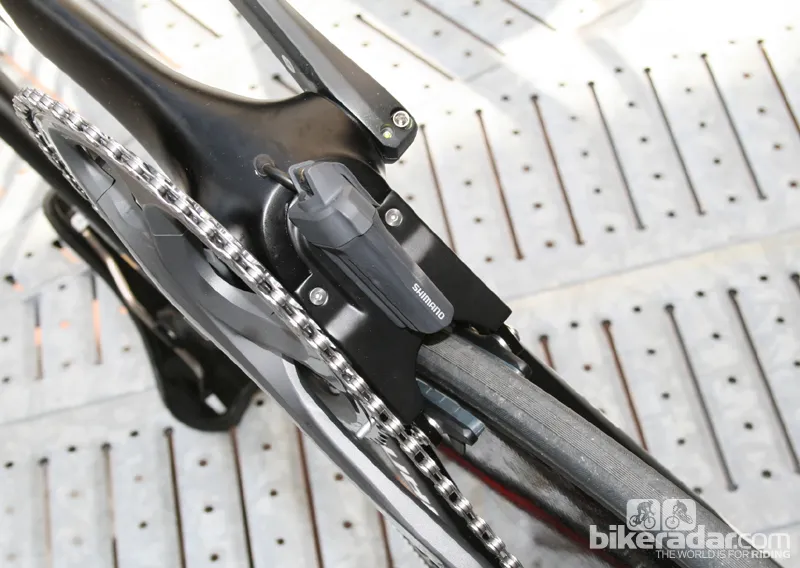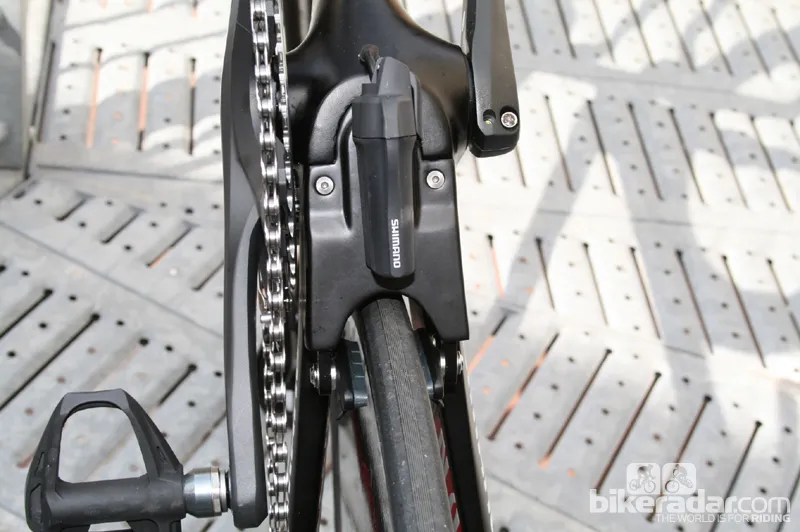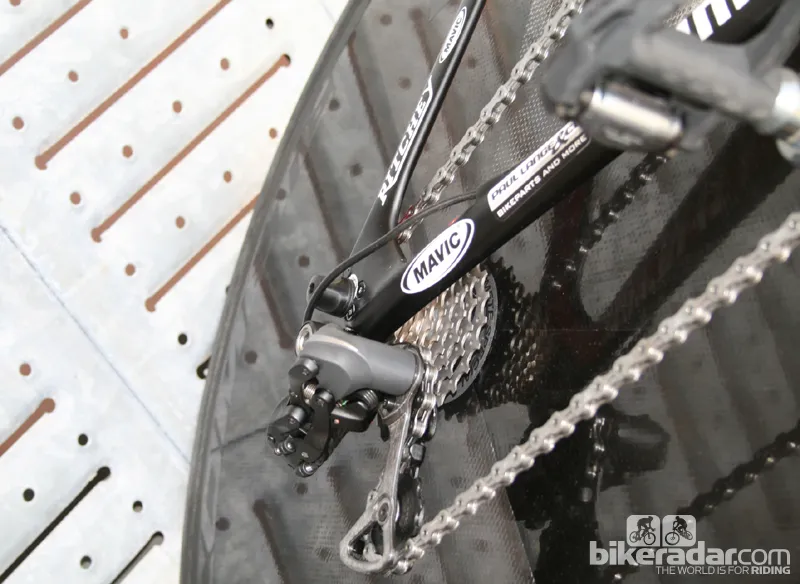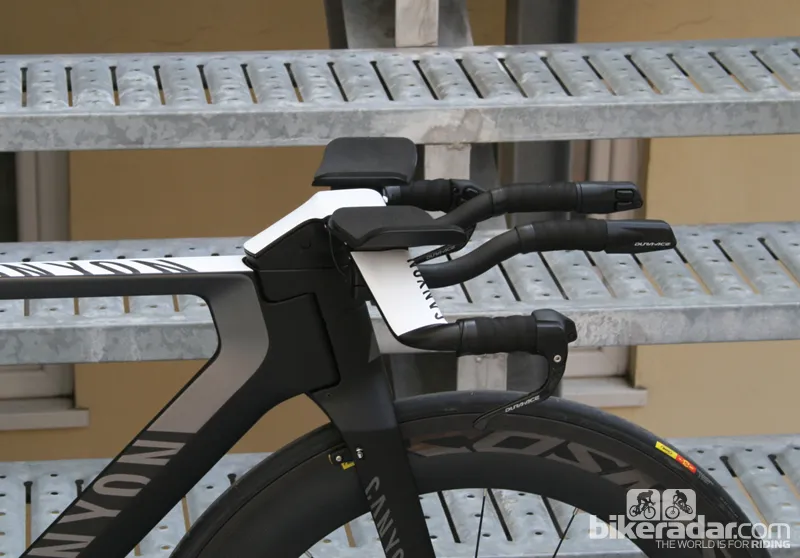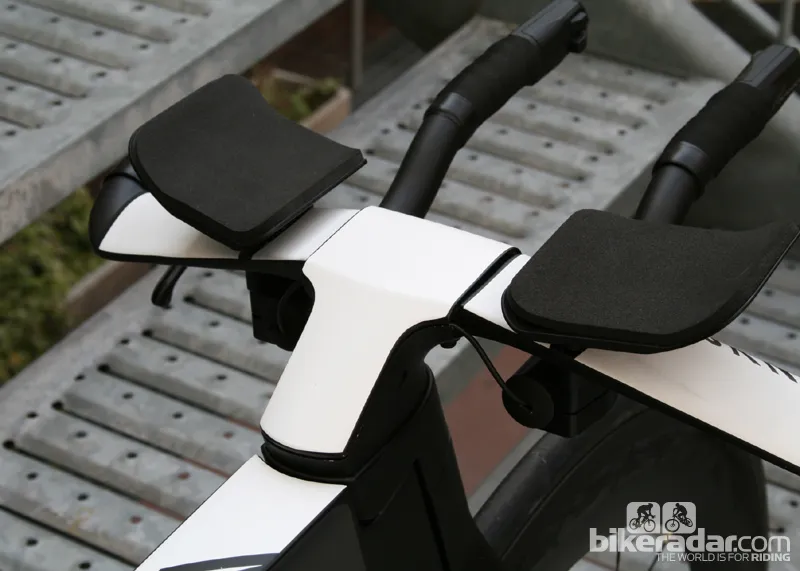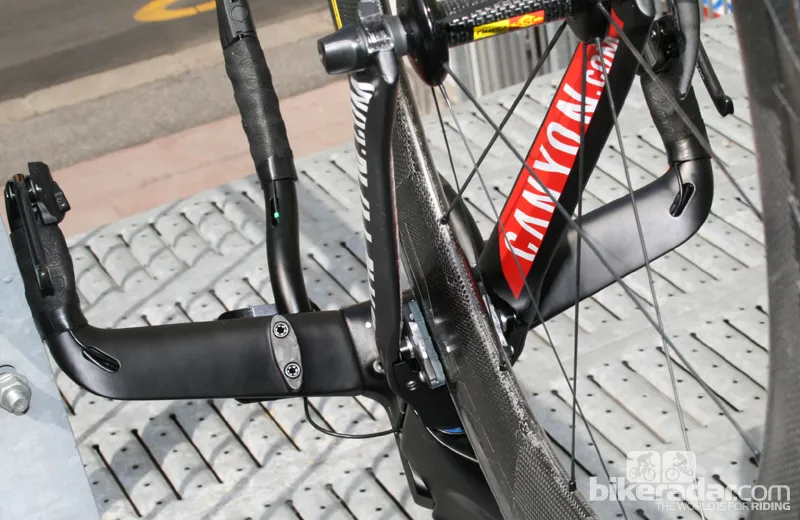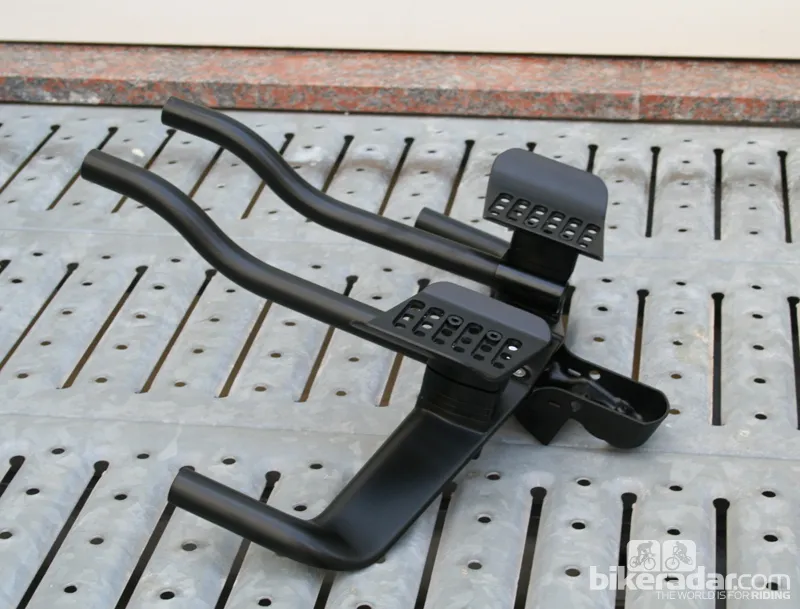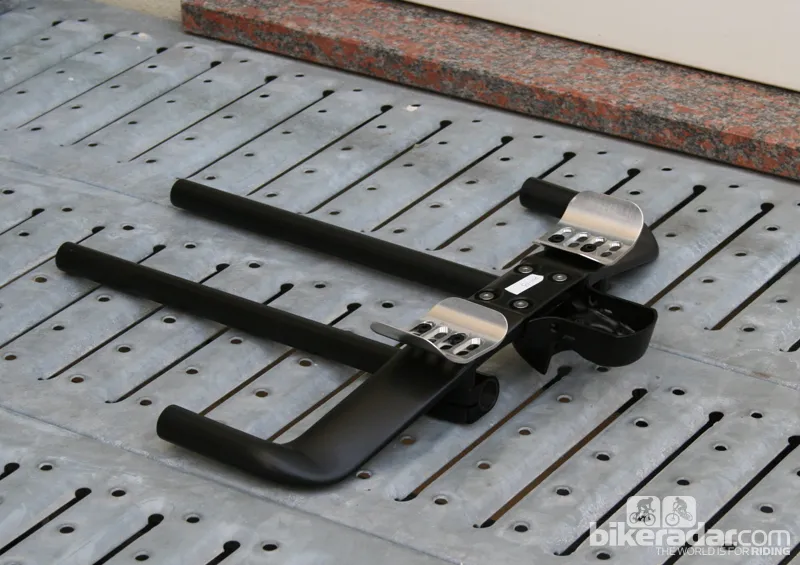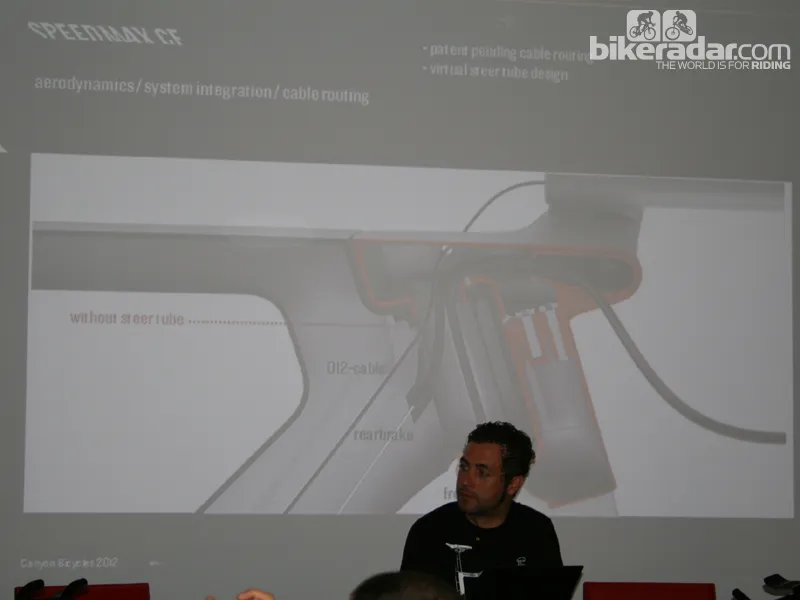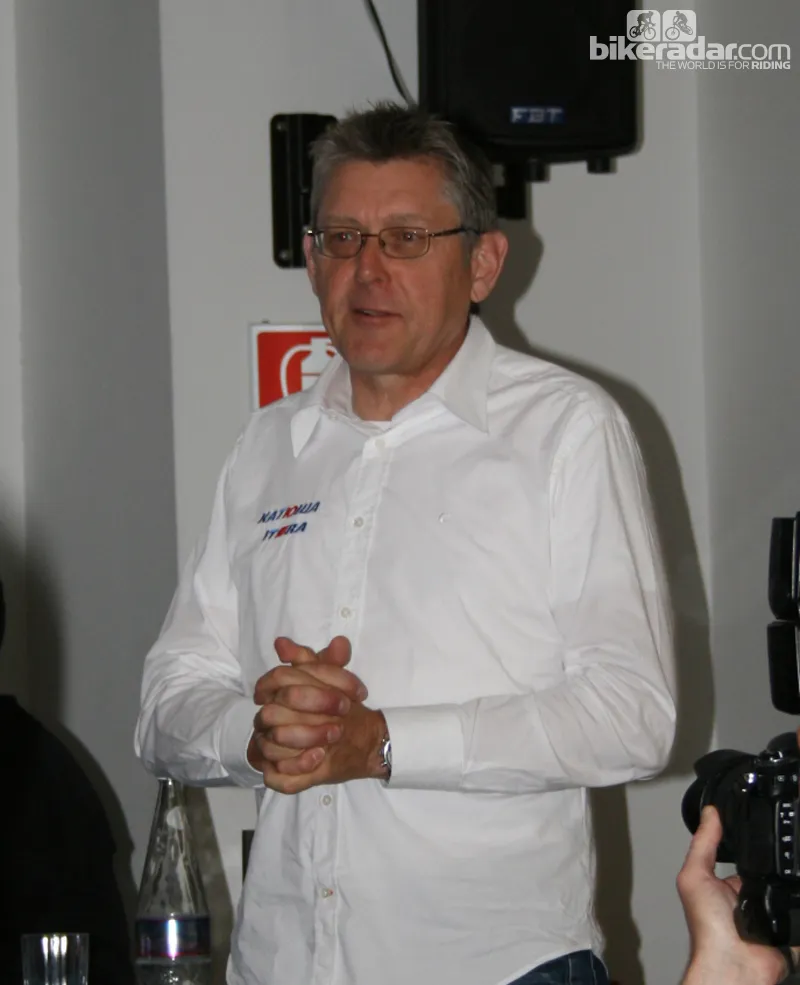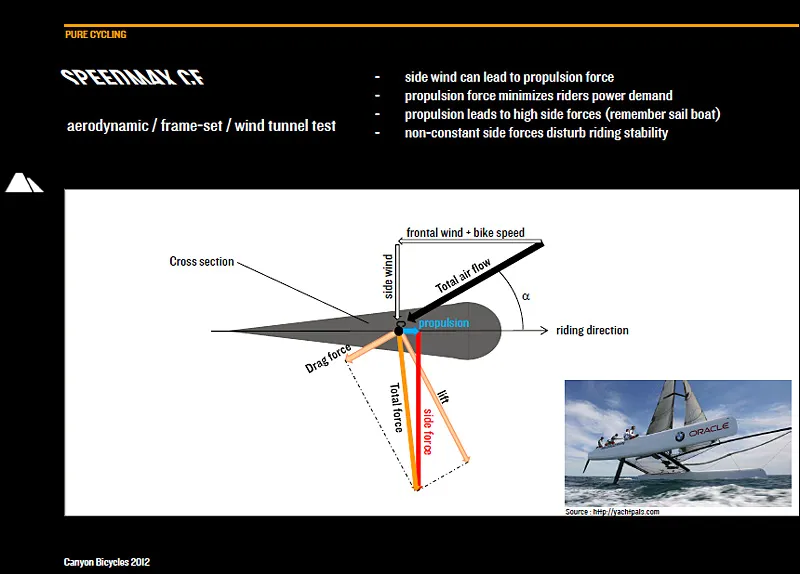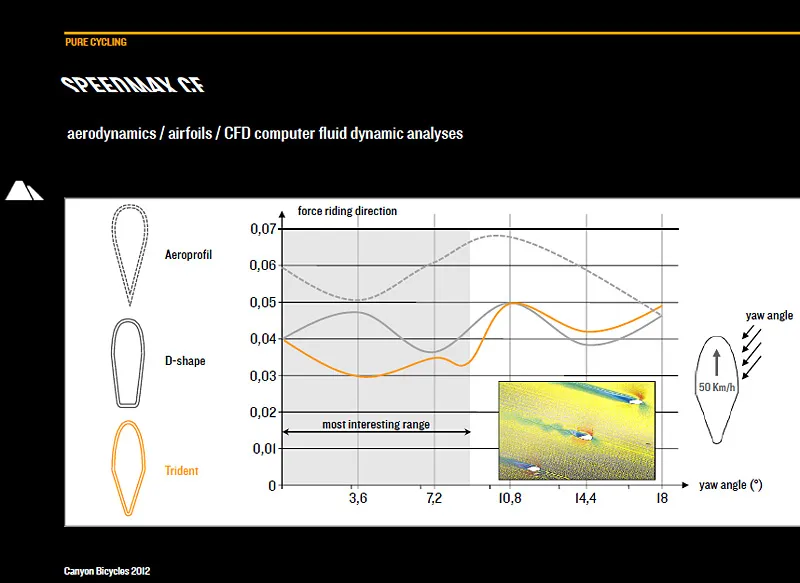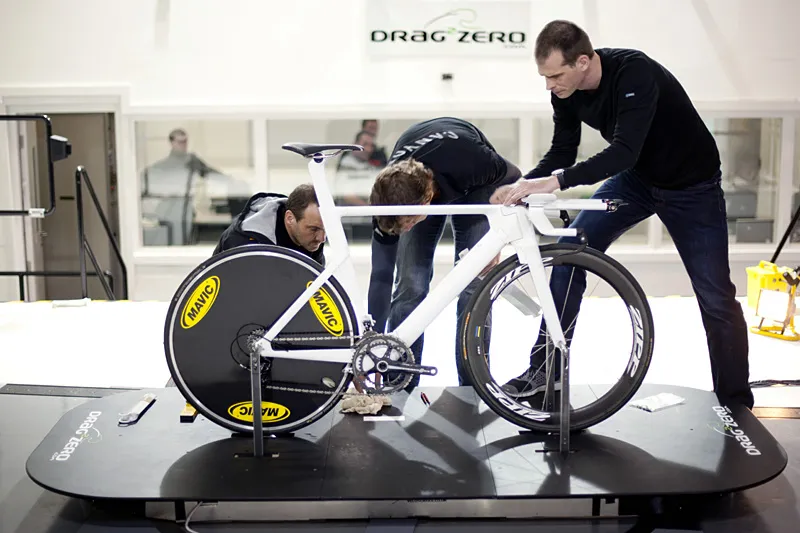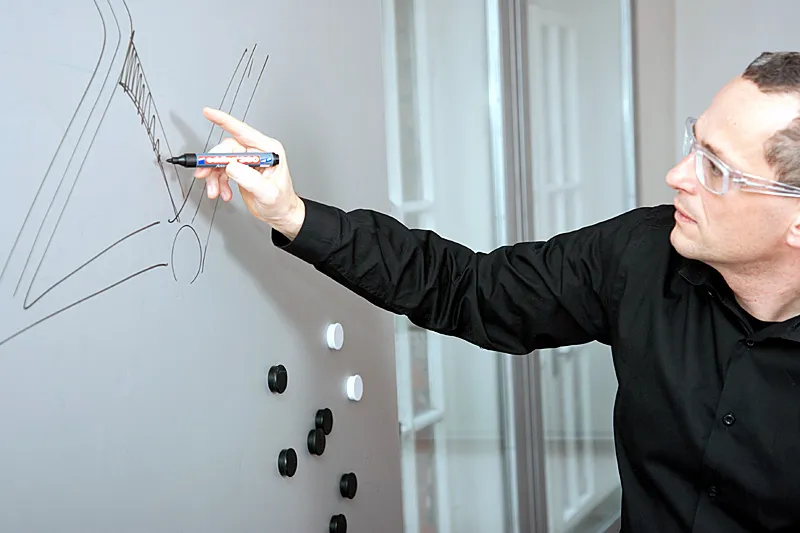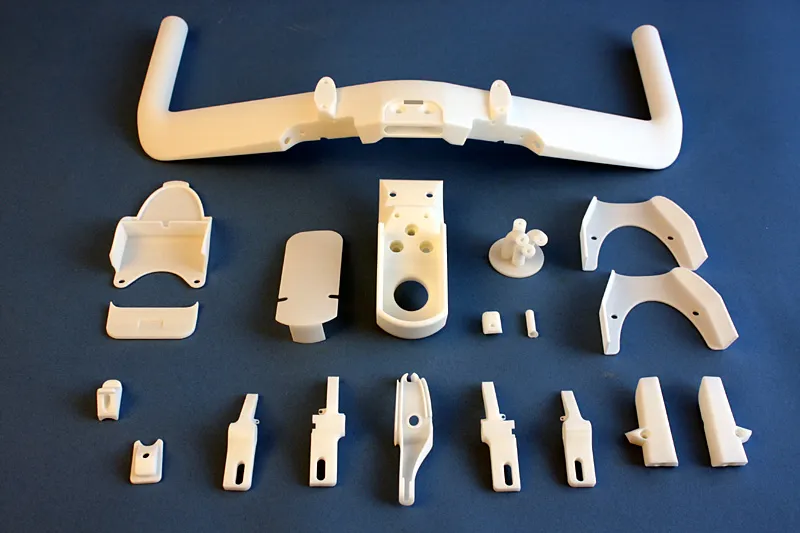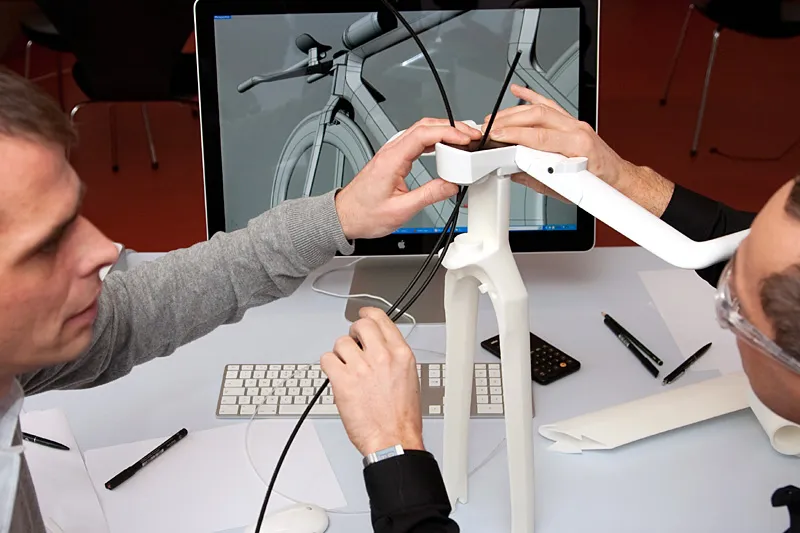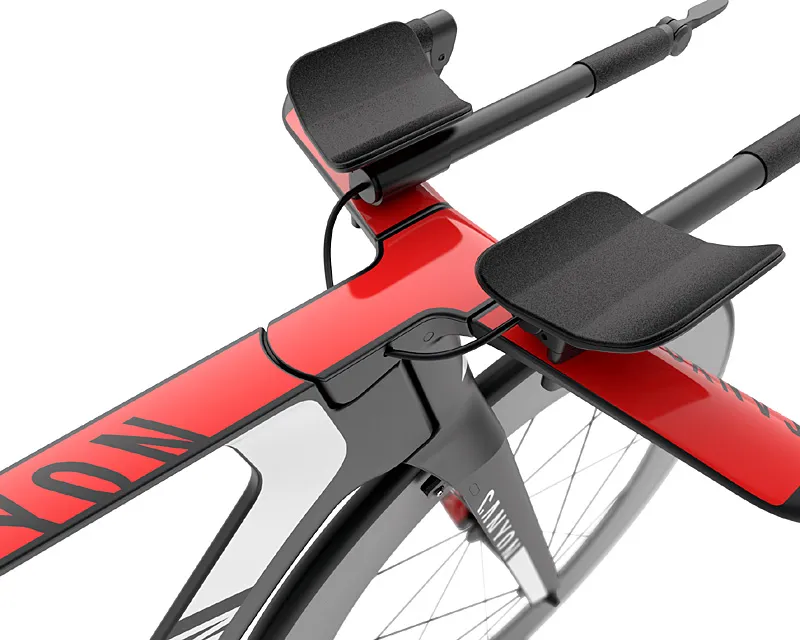German online bike company Canyon officially unveiled their Speedmax CF Evo time trial bike before stage 4 of the Giro d'Italia in Verona today. It's the product of 10 aerodynamicists, engineers and designers who've worked with former top time trialist Michael Rich, and the result is an extremely well thought out piece of speed weaponry.
The skinny
- Indoor velodrome testing on this bike had Denis Menchov (Katusha) putting out just 270W to go 47km/h (CdA in the low 0.18s). In layman's terms that's very quick for not a huge amount of effort.
- There are 7,560 (!) possible ways to set up the cockpit in each of three frame sizes, by altering handlebars, stems and extension type, and making width and height adjustments
- Only available with Shimano Di2 electronic shifting (Ultegra or Dura-Ace)
- Earliest availability mid-October 2012, depending on component sourcing
- Pricing for complete bikes will start at €4,000
- UCI legal in both TT and triathlon versions
The frame
When looking closely at the frame of the Speedmax CF Evo, the first thing that stands out is that the fork, seat and down tube profiles aren't traditional NACA airfoil shapes. They're curved at the front but taper off sharply. Canyon said that in doing their initial computational fluid dynamics (CFD) designs, they found that the NACA shapes were neither as aerodynamic nor stable at speeds below 70km/h and yaw angles up to 10 degrees as their new profiles, which they've dubbed Trident.
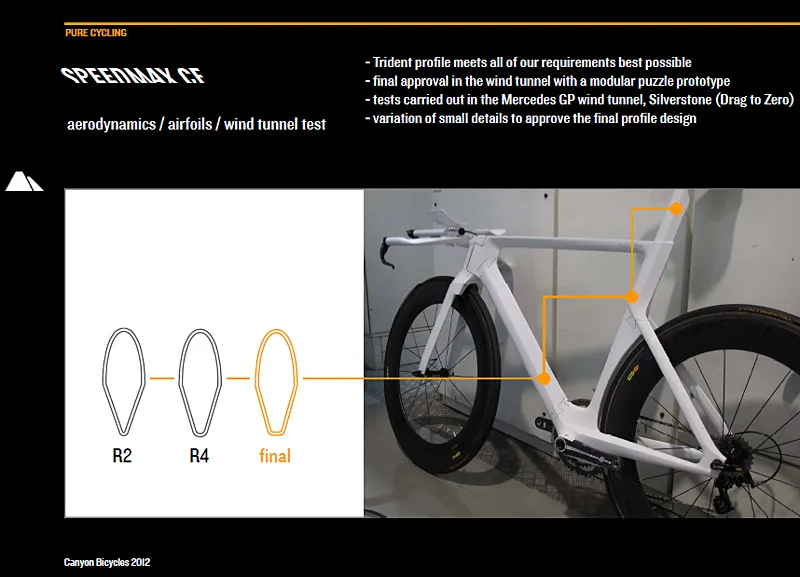
The evolution of the Trident shape
Canyon built an adjustable prototype and tested it at the Mercedes Petronas Drag2Zero wind tunnel in the UK, guided by aerodynamics expert Simon Smart. That led to some minor tweaking of the profile shape, followed by a full CFD build of the bike, then another prototype and final testing in the tunnel. The result was a frame that was a lot slipperier (more on that below), 25 percent more stable in crosswinds, 15 percent torsionally stiffer and around 300g lighter than their current Speedmax CF.
The stability of the frame is potentially a big win and was one of the things Michael Rich emphasised as being important. The less energy used to battle crosswinds, the more can be used to propel the bike forward.
Integration of key components
With the frame sorted, Canyon's next challenge was to integrate the handlebars, stem, forks and brakes into the most aerodynamic package possible. This isn't a new problem, so it's no surprise to see the front brake hidden inside the fork, the rear behind the bottom bracket, the stem nicely flush with the top tube and the cabling as internal as possible.
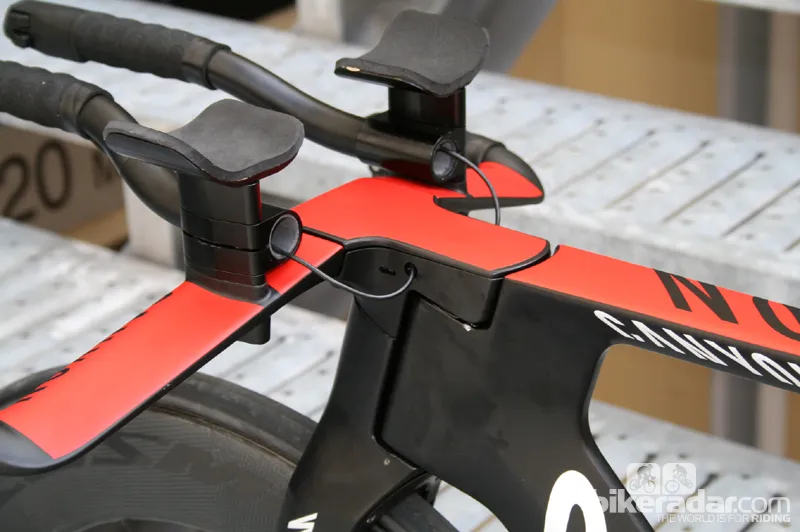
Exposed cables are kept to a minimum
There's a total of 12cm of exposed cable on this bike – the rest feeds through the handlebars into the stem, down a "virtual steerer tube", into the down tube and through the chainstays. It's apparently not too difficult to install either. Finally, the fork has been optimised to work best with 80mm deep front wheels, and it will accomodate wide rims. Canyon say this level of integration resulted in total savings of 21W at 50km/h (about 2sec/km) over the Speedmax CF.
Geometry and adjustability
Canyon will offer the Speedmax CF Evo in three sizes: S (54cm seat tube), M (56cm) and L (58cm), all growing proportionally in seat tube, top tube, head tube, wheelbase, stack (bottom bracket to top tube distance) and reach (BB to steerer) length. All feature 73.25° head angles and 73.5° or 76.5° seat angles, depending on which seatpost is chosen.
There are two stem options: one flush with the top tube and a riser – albeit a sleek one – with the option of spacers. The bike can therefore meet the requirements of UCI races (laid back Selle Italia Monolink seatpost) and triathlon (steeper fliphead rail seatpost) without radical changes.
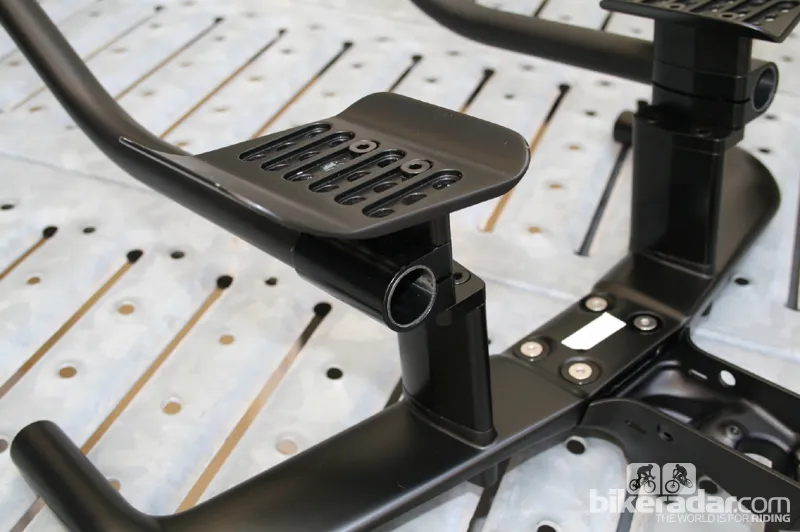
Taking bar adjustability to the extreme
Looking at the front end in more detail, the cockpit options are mind boggling. There are two different types of stems (flat or riser) in three lengths (75mm-90mm-105mm), flat or downswept 420mm wide cowhorn bars, three types of extensions (straight, S-bend, J or L-bend) which can be mounted above or below the base bar, three different width and 20 different height options for the extensions, and three different pad widths.
Canyon reckon that gives you 7,560 possible ways to set up your cockpit, while keeping the sleekness of the frame intact. We think this alone is worth waiting for as no other bar setup offers this. There are in addition three fork rake options (5mm total either way) but you'd really want to test ride the bike before playing with that.
Design
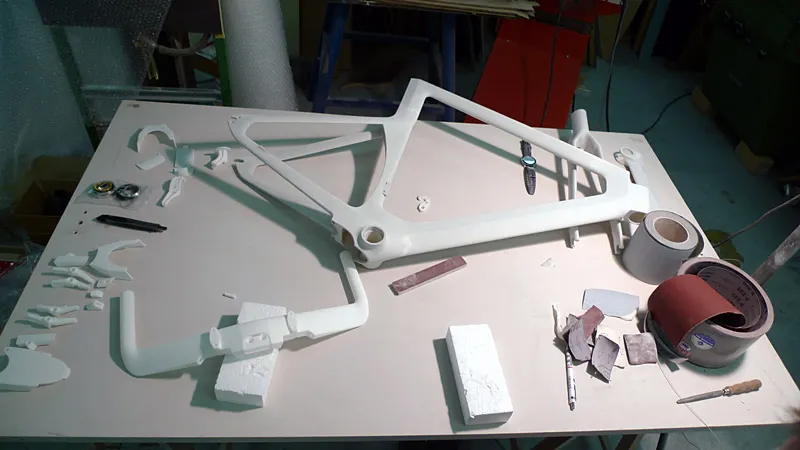
Designing the Speedmax wasn't a simple process
The Speedmax CF Evo is a function-over-form bike, but its designer, Tomas Fiegl from Artefakt, still had to produce something that looked good. Aesthetics are a key selling point after all, and this machine does follow through with some slick artwork and an elegant frame.
The red top tubes and handlebar tops on the Katusha bikes we saw look the business. Think "knife" and "sword" and you get the idea. It's complemented by a white 'Z' shape on the sides of the tubes with the Canyon name pretty prominent, as you'd expect. The bike has been awarded a 2012 Red Dot design award as well as the all-important UCI certification.
Specification and availability
The Canyon Speedmax CF Evo is being specced with Shimano Dura-Ace or Ultegra Di2 electronic groupsets, with batteries being placed inside the frame. Surprisingly there's not going to be a mechanical option, but Canynon are confident that this won't affect sales. Given that prices for complete bikes with Ultegra Di2 and low-end wheelsets are expected to start from around €4,000, we can understand why they're not worried. Most superbike framesets cost this alone.
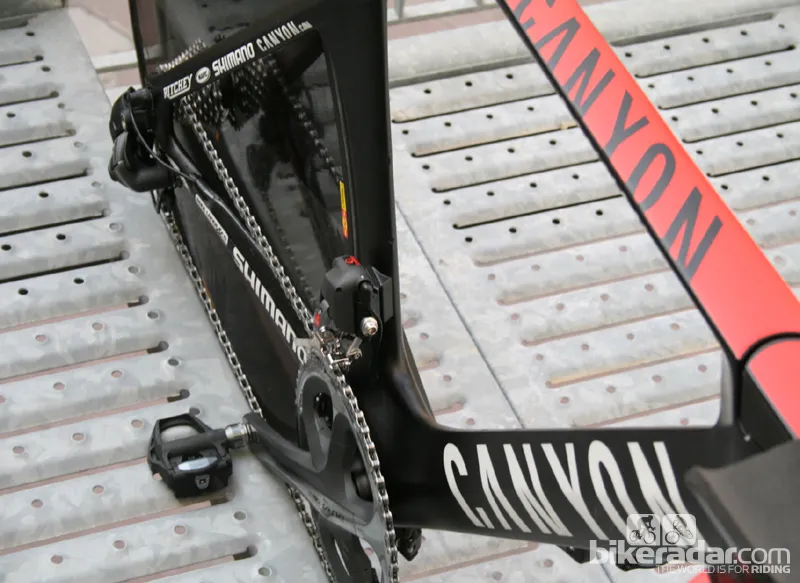
Shimano Di2 shifting only
Wheelset options will be a choice of Mavic, Reynolds or Zipp, while on the saddle front you'll have to be content with a Selle Italia (Monolink or rail). The bike's a 2013 model and will be available from mid-October, providing Canyon's component suppliers can meet the demand. We're aiming to get one to test a little before then, and will be quick to report on how it rides.
Putting it to the test with Katusha's 'climbing team'
Team Katusha were astride their Speedmax CF Evo machines in today's fourth stage of the Giro. Team boss Hans-Michael Holczer insisted that they didn't have the team to win and merely wanted to support climber and general classification rider Joaquim Rodriguez, and that he'd be happy with anything above 15th. Saying that, the lads did rather well for themselves, finishing second in the stage, just five seconds behind winners Garmin-Barracuda.
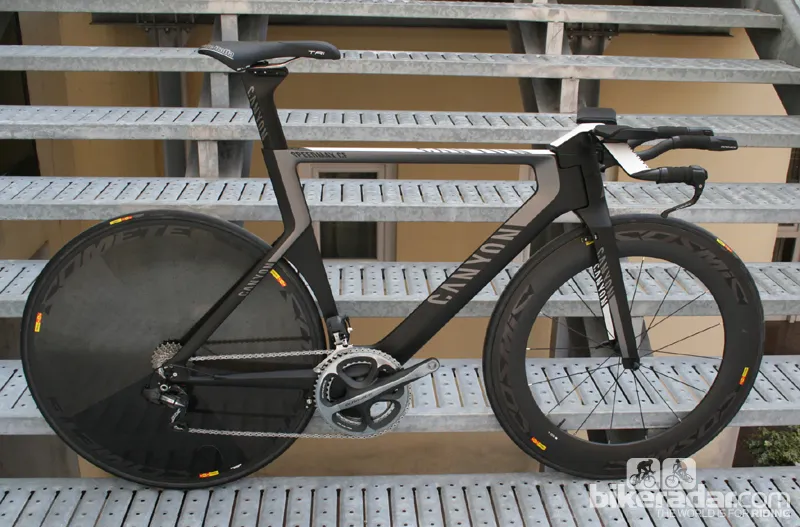
The new Speedmax CF Evo in its 'triathlon' guise with forward seatpost and riser stem
